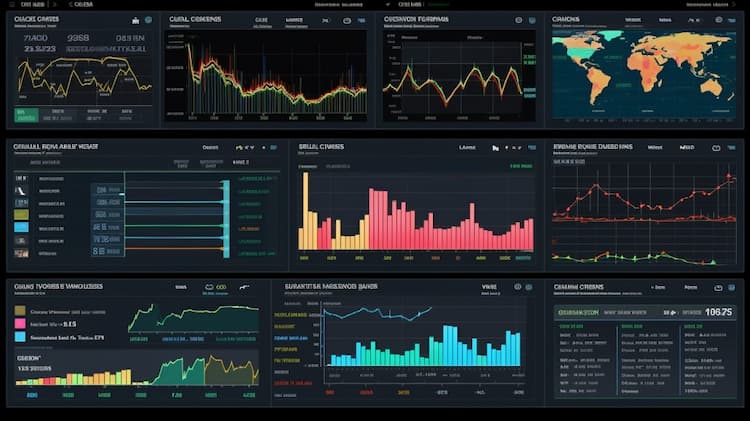
What types of bonds are included in the AGG ETF?
When it comes to investing in exchange-traded funds (ETFs), understanding the underlying assets is crucial. In this article, we will delve into the world of the AGG ETF and explore the different types of bonds included in this popular financial instrument. Whether you are a seasoned investor or just starting out, this FAQ guide will provide you with valuable insights into AGG and its bond composition.
What is the AGG ETF?
The AGG ETF, also known as the iShares Core U.S. aggregate Bond ETF, is one of the most widely recognized fixed-income ETFs. It aims to track the performance of the Bloomberg Barclays U.S. aggregate Bond Index, which represents the overall U.S. investment-grade bond market. The AGG ETF provides investors with a diversified exposure to a broad range of bonds, making it an attractive option for those seeking to invest in the U.S. bond market.
To learn more about the AGG ETF, you can visit the official iShares website.
holdings : What types of bonds exactly are included in the AGG ETF?
The AGG ETF holds a variety of bonds to achieve its investment objective. Some of the main types of bonds included in the AGG ETF are:
U.S. Treasury Bonds: These bonds are issued by the U.S. Department of the Treasury and are considered one of the safest investments available. They play a crucial role in the AGG ETF's portfolio due to their low default risk.
Corporate Bonds: AGG also includes bonds issued by corporations. These bonds represent debt obligations of companies and typically offer higher yields compared to U.S. Treasury Bonds, but with an increased level of risk.
Mortgage-Backed Securities (MBS): The AGG ETF may invest in MBS, which are securities backed by pools of residential or commercial mortgages. MBS provide exposure to the real estate market and can add diversification to the AGG portfolio.
Government-Related Bonds: The AGG ETF may also hold bonds issued by government-related entities such as government-sponsored enterprises (GSEs) like Fannie Mae and Freddie Mac. These bonds offer a mix of government support and potentially higher yields.
To get more detailed information about the specific bond holdings of the AGG ETF, you can refer to the official fund documentation or prospectus available on the iShares website.
 AGG overlap What types of bonds are included in the AGG ETF?
AGG overlap What types of bonds are included in the AGG ETF?
How does the AGG ETF benefit investors?
The AGG ETF offers several benefits to investors who are looking to gain exposure to the bond market:
Diversification: By investing in the AGG ETF, investors gain access to a diversified portfolio of bonds across different sectors and maturities. This diversification helps reduce the impact of individual bond defaults or market fluctuations on the overall investment.
Convenience and Liquidity: As an ETF, AGG can be easily bought and sold on stock exchanges throughout the trading day. This provides investors with the flexibility to enter or exit their positions at any time and take advantage of market opportunities.
Cost Efficiency: Compared to actively managed bond funds, the AGG ETF generally has lower expense ratios. This means investors can achieve broad bond market exposure at a relatively low cost, potentially enhancing their long-term returns.
For more information on the benefits and features of the AGG ETF, you can refer to the iShares website or consult with a financial advisor.
In conclusion, the AGG ETF is a popular investment option for those seeking exposure to the U.S. bond market. It comprises various types of bonds, including U.S. Treasury Bonds, corporate bonds, mortgage-backed securities, and government-related bonds. The AGG ETF provides investors with diversification, convenience, liquidity, and cost efficiency. However, it's essential to conduct thorough research and consider your investment goals and risk tolerance before investing in any financial instrument.
Disclaimer: The information provided in this article is for educational purposes only and should not be construed as financial advice. It is recommended to consult with a qualified financial advisor or conduct your own research before making any investment decisions.
Source 1: AGG issuer website
Source 2: Reuters article about AGG
AGG quote and analysis
Discover the top holdings, correlations, and overlaps of ETFs using our visualization tool.
Our app allows you to build and track your portfolio.
To learn more about the AGG iShares Core U.S. Aggregate Bond ETF, access our dedicated page now.
FAQ
What is the AGG ETF?
The AGG ETF, or iShares Core U.S. aggregate Bond ETF, is an exchange-traded fund that provides investors with exposure to the broad U.S. investment-grade bond market.
What is the underlying index that the AGG ETF aims to track?
The AGG ETF aims to track the performance of the Bloomberg Barclays U.S. aggregate Bond Index, which represents a diverse portfolio of U.S. investment-grade bonds, including Treasury, government-related, corporate, and securitized bonds.
What types of bonds are included in the AGG ETF?
The AGG ETF includes various types of bonds, such as U.S. Treasury bonds, government agency bonds, corporate bonds, mortgage-backed securities, and other high-quality fixed-income instruments issued in the United States.
How does the AGG ETF work?
The AGG ETF works by pooling investors' funds to purchase a diversified portfolio of bonds that closely replicate the performance of the underlying index. The ETF aims to provide exposure to the broad U.S. investment-grade bond market, allowing investors to gain access to a wide range of fixed-income securities.
What are the advantages of investing in the AGG ETF?
Investing in the AGG ETF offers potential benefits such as diversification across the U.S. investment-grade bond market, exposure to a wide range of bond sectors, potential income generation, potential risk reduction in a balanced portfolio, and ease of access to the bond market through a single investment. It provides liquidity, convenience, and the potential for stable income.





